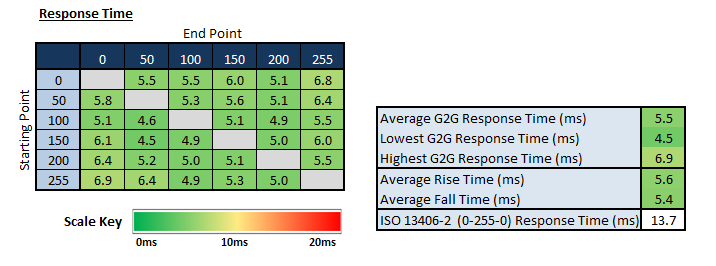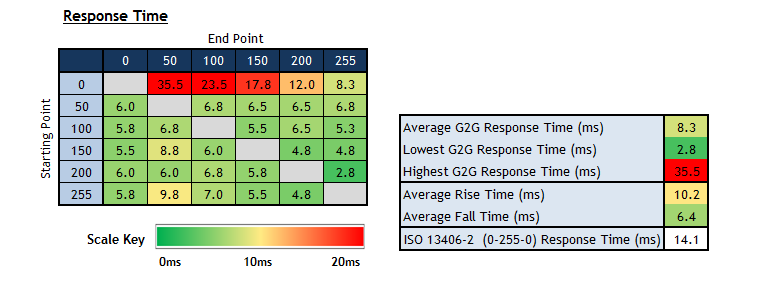MistaSparkul
2[H]4U
- Joined
- Jul 5, 2012
- Messages
- 3,476
Perhaps a 'typical' IPS, but compared to a gaming IPS?
I have both, and the VA is noticeably slower. Not just in the dark areas where all detail that would be visible due to increased contrast is obliterated, the entire screen is slower / blurier than my IPS. Aside from the size, it feels like a downgrade all around.
Acer XB270HU:

LG 32GK850G:

Average GtG without the slow black > grey transitions is 6.4ms while the IPS is 5.5ms. That is an average difference of only 1ms and I wouldn't consider that to be a big difference. Newer TN panels go down 2-3ms GtG average and that is indeed noticeable. Only the newer IPS found in the LG27GL850 would be in a different league when it comes to speed.
![[H]ard|Forum](/styles/hardforum/xenforo/logo_dark.png)